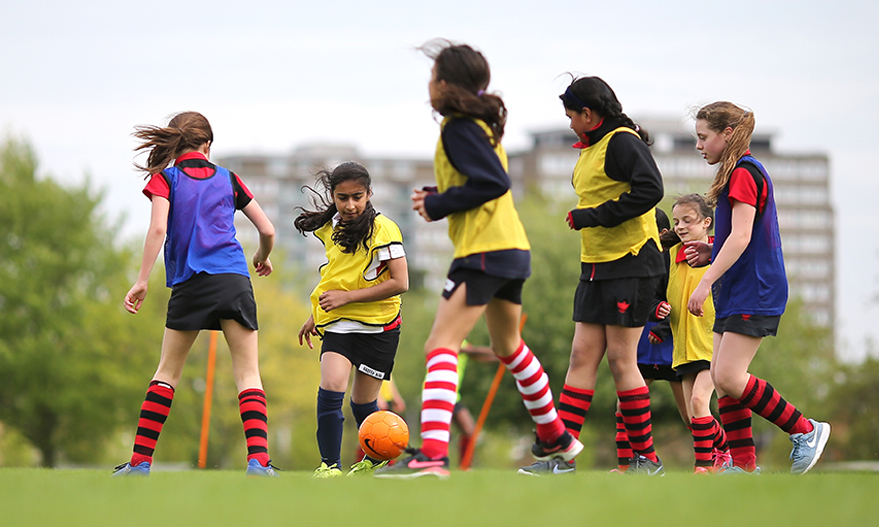
How to help 5-11 year olds excite with the ball and seek creative solutions
- The Boot Room
- 27 August 2020
Want to help young players to develop exciting and creative play? Start by changing your own mindset.
Before we get started, it’s important to explain that creativity is underpinned by confidence – and complete mastery of the ball. This mastery allows players to do the unexpected: it’s the foundation from which everything else is built, so make it a priority.
Remember that creativity is a small percentage of a player’s overall game, the rest is made up by doing the basics brilliantly.

In order to be creative and exciting on the ball, players must know that any attempt to do something that is unusual or different will be valued
Encouraging creativity
As coaches and parents, we must recognise and support players when they try something out of the ordinary. In the early stages of experimentation there will be lots of failed attempts; but, if encouraged through words and lots of practice, these failed attempts may soon turn into actions that positively impact the game.
During practice, there needs to be a balance between the coach giving players ownership over their actions and pointing out opportunities where they could have tried to be more creative and attempted something different. If you demand a more creative response, players will take this on board and try things because they know you want them to push the boundaries.
The ability to play without fear comes from an environment that promotes trust, empowerment and ownership in the players. This is not easy, because it means we have to be good at facilitating practice at times rather than controlling all aspects of training and games. Demanding more exciting and creative play, and encouraging players to stay on the ball more is all well and good in training, but it’s vital that this approach extends to matches as well. This is the real ‘testing ground’.
When coaching our young players, let’s move away from the mundane and predictable. Let’s appreciate and demand more of the abilities and skills that get spectators off their seats, the creativity that young players want to go home and copy, and the play where young players take more risks and push the boundaries.
Help players develop creativity by:
- allowing time for them to experiment
- valuing the unexpected and the unusual
- demanding that players look for more creative solutions
- sending out consistent messages in training and matches
- making sure you have given them a robust physical and technical base from which to be creative and exciting
- encouraging them to ‘play in the moment’ and be prepared to react instinctively.
To learn more about Foundation Phase DNA, click here.


